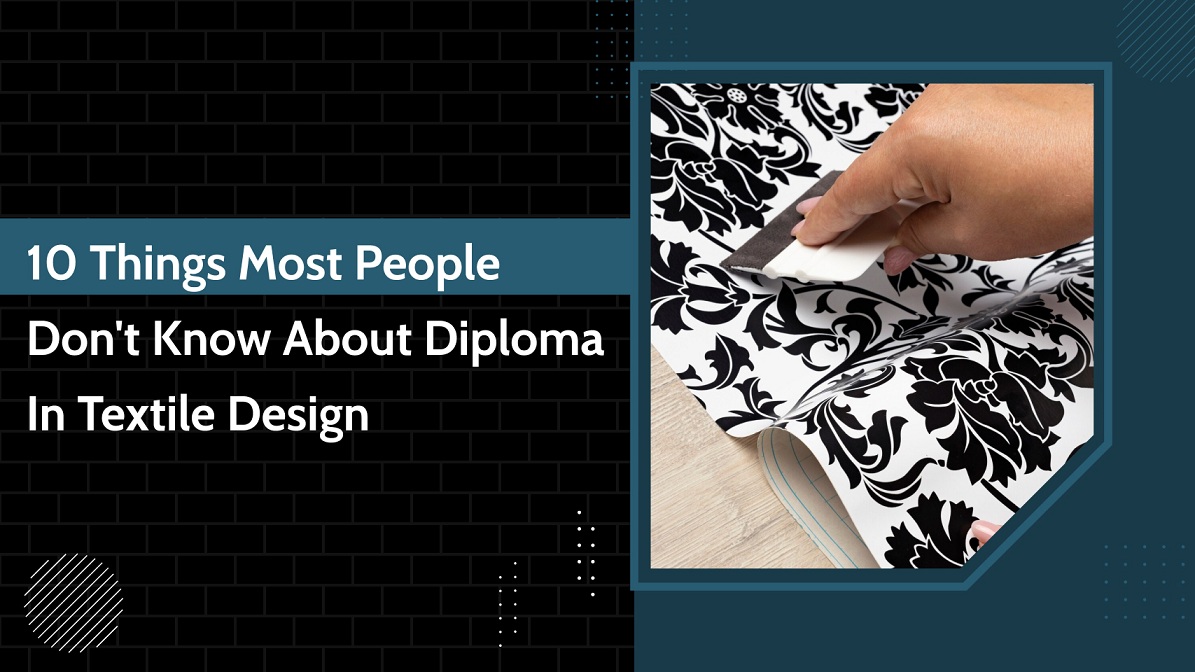Textile design is a fascinating industry that involves art, technology, and fashion. Yet, many individuals don’t fully understand what a diploma in textile design offers.
So, if you are making up your mind to pursue a career in textile design and want to examine what a diploma in textile design actually offers, below are ten things you probably didn’t know about earning a diploma in textile design.
In this blog, we will explore ten things most people don’t know about a diploma in textile design in Bangalore.
Read to know more about.
An Overview of Diploma in Textile Design
A Diploma in textile design is a professionally designed short term program that is specialized on the art and science of creating fabrics and other textile products. The program is typically offered by design schools, technical colleges, and universities.
The textile and design courses come with several skills like learning to analyze a Fabric and visualization with several elements in the Fabric, learning to read a color palette, learning to match colors to tones, understanding yarns and threads etc.
Textile Design is dominant as it influences how your spectators perceive your brand. The fancy you make Threads or Yarns, into any fabric they desire and know about your business.
Career Opportunities after Diploma in Textile Design
Graduates with a diploma in textile design can pursue various career paths, which include:
| Job Position | Description | Average Salary |
| Fashion Designer | Specialized in fabric selection and garment construction. | INR 3-7 LPA |
| Textile Designer | The basic role is to create patterns and prints for fabrics. | INR 4-9 LPA |
| Interior Designer | The focus is on the textile choices for interior decor. | INR 2-7 LPA |
| Product Designer | He works in the manufacturing sector to develop new textile products. | INR 4-8 LPA |
| Freelance Designer | Mostly offers design services to multiple clients. | INR 5-9 LPA |
After completing the textile designing course in Bangalore or other states, one can also go for their higher studies. It will enhance their language skills and provide them a deeper understanding of the program.
10 things to know about a diploma in textile design
Here are the ten things that most people don’t know about a diploma in textile design and you must read it below:
- Duration: The duration is typically 1 or 2 years long depending on the college where candidates want to study. The diploma in textile designing in Bangalore offers one year of the program.
- Course Curriculum: Diploma in Textile Design enables students to build a career in Fashion & Textile Design. Students are trained in skills and tools to become a professional Designer.
The core subjects of the diploma in textile designing include:
- Textile Science
- Design Principles
- Textile Technology
- Computer-Aided Design (CAD)
- Fashion Textiles
- Industria Textiles
The program also offers workshops and lab work to enhance hands-on experience to practice weaving, printing, and dying.
- Eligibility & Admissions: The basic eligibility criteria for textile fashion designing courses is that a Candidate must have completed 10+2 with at least 50% aggregate marks from a recognized institution or equivalent.
- Practical Training: The program offers various workshops and lab work to aspiring students to increase hands-on experience so as to practice weaving, printing, and dying.Students also get to know the deeper understanding of real-world experience through various internships, and placements in textile mills, fashion houses, or design studios.
- Course Fee: The textile design courses fee varies from one institution to another.
However, the textile designing course fee may range from 50,000 to 3 lakhs per annum.
- Specializations: The diploma in textile design offers numerous specializations in the core areas such as fashion textiles, home textiles, and industrial textiles, to allow students to focus on their particular area of interest.
- Industry Exposure: The program provides students with industry experience and exposure through various industry trips, workshops and internships programs at national level that helps building a different perspective among students to become competent in the industry.
- Portfolio Development: Students also get a chance to build their portfolio which helps them to showcase their skills and expertise in the industry.
Conclusion
Wrapping up! With a diploma in textile design students can have various options for the future in their career prospects. They can take up roles such as a textile designer, fabric designer, textile analyst, or consultant. In the article above, we have also mentioned the hidden things that most people don’t know about a diploma in textile design which is important to have a look on.
FAQs
- What is the basic knowledge of textile design?
Textile design is the process of designing, planning, cutting, and producing the garment in the best possible form of its appearance.
- What is the scope of a Textile Design Diploma?
There are numerous opportunities in fashion design, interior design, textile manufacturing, product development, freelance designing, and roles in creative and technical textile industries.
- What is the benefit of a textile diploma?
A Textile diploma offers a number of benefits including fashion design, interior design, automotive, and even entertainment industry.
- What must be the eligibility to pursue a textile diploma?
Candidates must have completed 10+2 with at least 50% aggregate marks from a recognized institution or equivalent.
